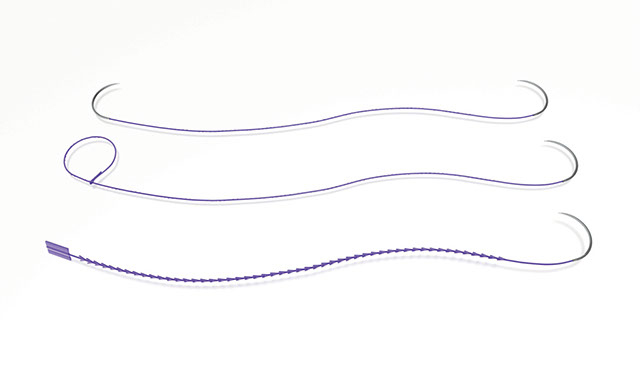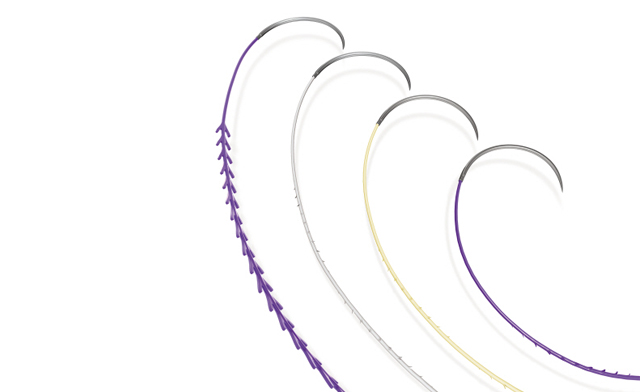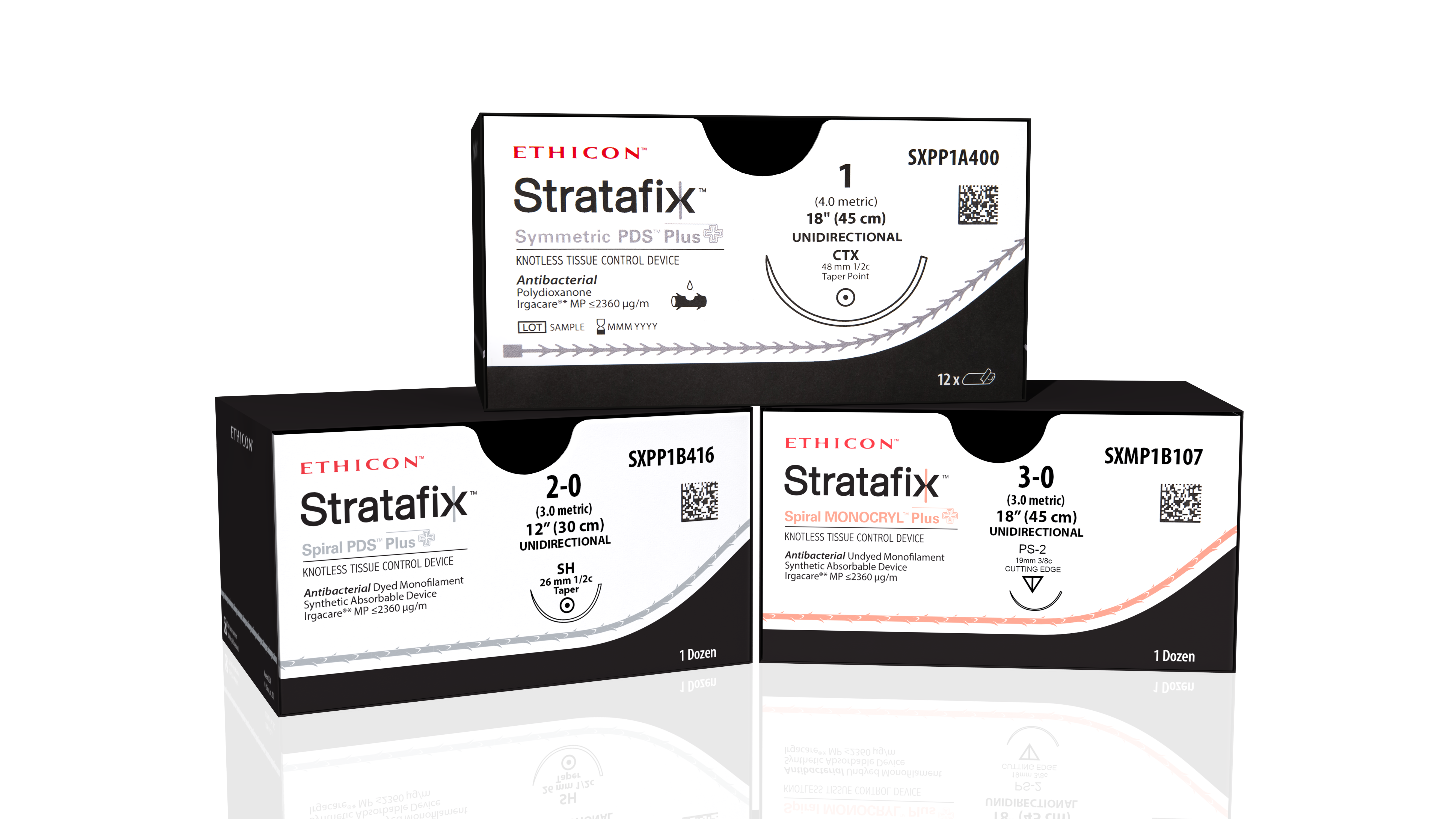Ethicon this week debuted two offerings in the Stratafix line of knotless sutures, the Stratafix Spiral PDS Plus and the Stratafix Spiral Monocryl Plus. Both of the newcomers incorporate the company’s antibacterial technology, making them the first and only spiral barbed sutures with that feature.
Liza Ovington, Ethicon’s franchise medical director, notes the inclusion of the antibacterial technology provides surgeons with the chance to incorporate one more vital step into the process of preserving patient safety.
“When a patient goes in for surgery, they may have numerous factors that place them at risk for a surgical site infection. And a lot of those risks we can’t control,” says Ovington, listing the myriad of factors that can negatively impact a procedure, including medications that compromise the immune system or disease states that can make a patient more prone to infection.

(Image credit: Ethicon)
“But there are things we can do,” Ovington continues. “And for certain patients and certain procedures that last straw that breaks the camel’s back, in other words that tips them in favor of having an infection, might be the bacterial colonization of the suture. So we offer this antibacterial coating, which is a highly purified form of antibacterial called triclosan that prevents bacteria from taking hold and colonizing that suture and getting a foothold to start an infection that will impact that patient.”
Dr. James Dana Kondrup, MD, FACOG, a minimally invasive gynecological surgeon in private practice at Binghamton, New York’s Lourdes Hospital, agrees the bolstered protection against infection is key, particularly in his field.
“One of the major concerns, especially when you’re doing laparoscopic hysterectomies, whether you’re closing from below through the vagina or you’re closing from above laparoscopically, is the exposure to the vaginal cuff to all of the microbes inside the vagina,” Kondrup says. “So having an antimicrobial feature built right into the suture itself is an added benefit for a surgeon who’s working in an area that potentially is contaminated from midway through the surgery where you enter the vagina and you expose the tissue to bacteria.”
The new Stratafix knotless sutures are designed to work with a wide range of procedures and surgical fields. The Spiral Monocryl Plus sutures have a duration of approximately two weeks, making them ideal for closing skin. For deeper layers, such as such as organ, fat, and muscle, the PDS Plus sutures are recommended since they have a longer expected duration, lasting about six weeks.

(Image credit: Ethicon)
Ovington says the Spiral PDS Plus and the Spiral Monocryl Plus are a direct response to the emerging needs of surgeons, who are simultaneously adjusting to a shifting patient population and new OR technologies.
“We talk to surgeons, obviously, on an ongoing basis, and we talk to them about what their unmet needs are in general and in wound closure,” explains Ovington. “They tell us that their top needs are: things that make them more efficient, that enable them to be more precise in these new surgical arenas like robotics and MIP, something to help with infection prevention. They want things that help improve cosmesis of the healed incision and things that reduce complication.”
According to Ovington, the new products address the bulk of those concerns. The more secure and consistent closure provided by the barbed suture helps healing and limits infections, and greater efficiency is afforded by eliminating the the need to tie knots.

(Image credit: Ethicon)
Kondrup is notably enthusiastic about the added ease of use of the barbed sutures.
“When I travel around the world teaching, one of the hardest skills that surgeons have to master is laparoscopic tying. Not necessarily suturing; suturing is one aspect, but tying is very difficult for many surgeons.” says Kondrup.
By eliminating the knot, the Stratafix sutures save valuable time for the surgeons, benefitting patients.
“All you have to do is suture, suture, suture,” explains Kondrup. “And so you’re doing a continuous stitch, putting tension on the stitch and suturing it, and putting tension so you tighten up a little bit. And essentially the next thing you know, you’re done. And you don’t have to go back and tie anything, so that’s really important.”




